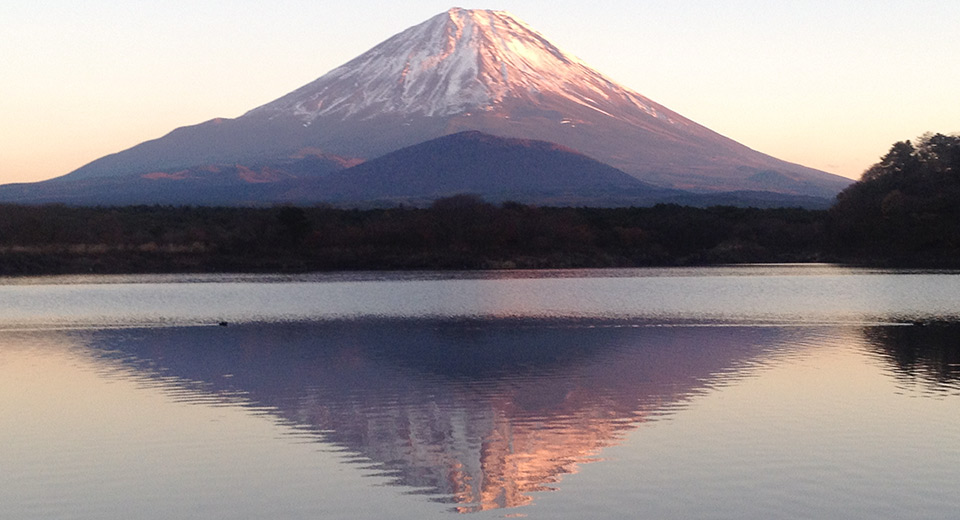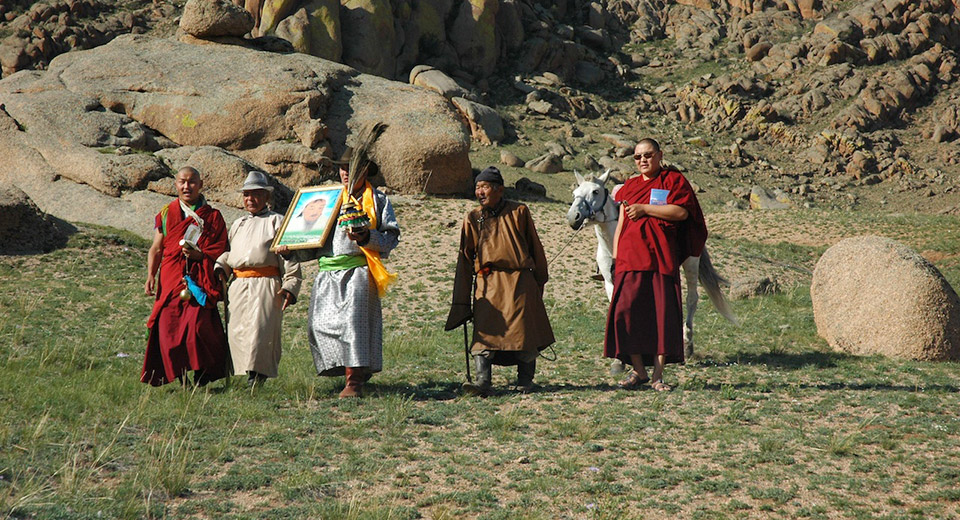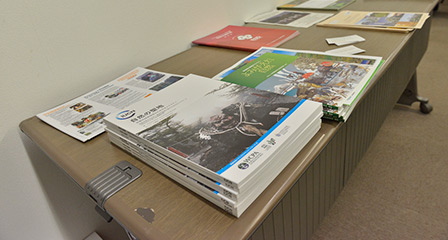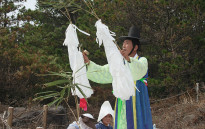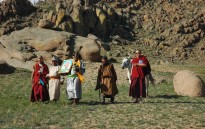आशियात, पवित्र नैसर्गिक साइट्स पुढाकाराने कार्य करते जैवविविधता नेटवर्क जपान आणि ते संरक्षित क्षेत्रे-जपानवरील आययूसीएन वर्ल्ड कमिशन. आशियातील पवित्र नैसर्गिक साइट्सची ओळख आणि संवर्धन सुधारणे हे या कार्याचे उद्दीष्ट आहे. काम हे काम आहे जे अनुदानामुळे शक्य आहे Keidanren निसर्ग संवर्धन निधी ज्यासाठी पुढाकार कृतज्ञ आहे . निधी आणि त्याचे भागीदार ऑपरेट करतात आणि त्यास प्रोत्साहन देतात जैवविविधतेसाठी कीडन्रेन घोषणा.
आशियातील पवित्र नैसर्गिक साइट
पवित्र नैसर्गिक साइट्स अनेक पिढ्यांसाठी संवर्धन आणि समुदाय-आधारित संरक्षित क्षेत्राच्या स्वदेशी आशियाई तत्वज्ञानाचे समर्थन करणारे आशियाई लँडस्केप्समधील मुख्य वैशिष्ट्ये आहेत.. प्रकल्पाचे उद्दीष्ट आहेत:- समज विकसित करा, संरक्षित क्षेत्र व्यवस्थापक आणि संवर्धन व्यावसायिकांद्वारे पवित्र नैसर्गिक साइट्सचे समर्थन करण्याची ओळख आणि क्षमता,
- संरक्षित क्षेत्र व्यवस्थापक आणि संवर्धन चिकित्सकांचा समावेश असलेल्या तज्ञ आणि प्रॅक्टिशनर्सचे एक अनौपचारिक नेटवर्क तयार करा,
- शिक्षण साहित्य विकसित आणि प्रकाशित करा, त्यात आययूसीएन युनेस्को मार्गदर्शक तत्त्वांच्या अनुप्रयोगाची चाचणी करणार्या आशिया विशिष्ट केस स्टडीजची मालिका म्हणून समाविष्ट आहे, आणि हे आणि धडे सामायिक केलेल्या विस्तृत संरक्षित क्षेत्र समुदायासह सामायिक करा
आययूसीएन युनेस्को मार्गदर्शक तत्त्वे आणि त्यापलीकडे:
प्रोजेक्टचा मुख्य घटक म्हणजे पवित्र नैसर्गिक साइट मार्गदर्शक तत्त्वांसह कार्य करणे, त्यांचे गंभीरपणे पुनरावलोकन करण्यासाठी, त्यांना क्षेत्रात लागू करण्यासाठी आणि शिकलेले धडे सामायिक करण्यासाठी. अगोदर निर्देश केलेल्या बाबीसंबंधी बोलताना आययूसीएन युनेस्को मार्गदर्शक तत्त्वे, आधीच उपलब्ध आहे कोरियन आणि जपानी संरक्षित क्षेत्र व्यवस्थापकांना संरक्षित क्षेत्रात तसेच संरक्षित क्षेत्रात समाविष्ट केलेल्या अधिक चांगल्या प्रकारे आणि विस्तीर्ण जमीन आणि समुद्री बळीमध्ये असलेल्या लोकांना मदत करण्यासाठी मदत करण्यासाठी विशेषतः विकसित केले गेले आहे, विशेषत: कारण या बहुतेकदा विकास प्रकल्पांद्वारे धोक्यात आणले जाते..आशियाई प्रदेशातील बातम्या
इमारत ओळख आणि संवर्धन सुधारणे
एशियन पार्क्स कॉंग्रेस (जपान नोव्हेंबर 2013) आणि वर्ल्ड पार्क्स कॉंग्रेस (ऑस्ट्रेलिया, नोव्हेंबर 2014) सादर करण्यासाठी आदर्श स्थळे आहेत, प्रकल्पात सुरू असलेल्या कामाचे सामायिकरण आणि प्रोत्साहन. हा प्रकल्प तीन वर्षांहून अधिक डिझाइन केला गेला आहे आणि आशियाई पवित्र नैसर्गिक साइटवरील अनेक संवर्धन उत्पादने आणि प्रक्रियांमध्ये एकत्रित केले गेले आहे:पहिल्या टप्प्यात आशियाई प्रदेशातील केस स्टडीजचा समावेश आहे एशिया पार्क्स कॉंग्रेसमध्ये आणि पवित्र नैसर्गिक साइट्स उपक्रमासह ऑनलाइन देखील सादर केले गेले आहेत.. एशियन पार्क्स कॉंग्रेसमधील कार्यशाळा विशेषत: पवित्र नैसर्गिक साइटवर कॉंग्रेसच्या निकालांना पाठिंबा देण्यास मदत करतात. पवित्र नैसर्गिक साइटवरील प्रादेशिक आशियाई नेटवर्कच्या विकासासाठी स्वारस्य आहे.
फेज दोनने आशियाई ऑनलाइन केस स्टडीच्या अध्यायांमध्ये विस्तार करण्यावर लक्ष केंद्रित केले आहे जे शिकलेले धडे तसेच या प्रदेशातील धोरण आणि सरावातील आव्हान सादर करणार्या पुस्तकात गुंडाळले जातील.. हे पुस्तक वर्ल्ड पार्क्स कॉंग्रेसमध्ये सादर केले जाईल (WPC). डब्ल्यूपीसी येथे एशियन सेक्रेड नॅचरल साइट्स नेटवर्क प्रशिक्षण मॉड्यूलच्या विकासाच्या समर्थनार्थ कार्यशाळांवर सहयोग करेल. नेटवर्क प्रथम प्रादेशिक कार्यशाळेस आणि हिमालयीन प्रदेशातील समर्थन मिशनला देखील समर्थन देईल. प्रादेशिक भाषांमध्ये आवश्यक आययूसीएन युनेस्को मार्गदर्शक तत्त्वांच्या अनुवाद आणि पवित्र नैसर्गिक साइटवरील देशातील प्रोफाइलच्या विकासास मदत करण्यावर एक सुरुवात होईल..
फेज तीन मुख्यत्वे विकासात आहे आणि ई-लर्निंग मॉड्यूल आणि प्रशिक्षण किंवा कार्यशाळेचे मॉड्यूल तयार करण्यासाठी आहे. संरक्षित क्षेत्र व्यवस्थापकांसाठी देशातील कार्यशाळा आणि प्रशिक्षण आयोजित केले जातील, संरक्षक आणि संरक्षक.
आशियाई प्रदेशातील साइट
 टन शाश्वत पर्यटनातून पवित्र ठिकाणी संरक्षण. Hakusan, जपान.
टन शाश्वत पर्यटनातून पवित्र ठिकाणी संरक्षण. Hakusan, जपान. संवर्धन आणि शाश्वत जिवंत समुदाय: युरोप आणि मध्य पूर्व मध्ये ख्रिश्चन मठ
संवर्धन आणि शाश्वत जिवंत समुदाय: युरोप आणि मध्य पूर्व मध्ये ख्रिश्चन मठ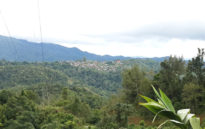 चंग मै लुआ लोकांच्या पवित्र डोंगरावर विरोधी मूल्य, थायलंड.
चंग मै लुआ लोकांच्या पवित्र डोंगरावर विरोधी मूल्य, थायलंड.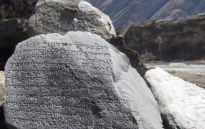 पाहिजे पवित्र व्हॅली: अहिंसा बौद्ध जीवनशैली आसपासच्या लोकांना प्रेरणा, नेपाळ
पाहिजे पवित्र व्हॅली: अहिंसा बौद्ध जीवनशैली आसपासच्या लोकांना प्रेरणा, नेपाळ Kakku आणि संवर्धन नीती gawbaka शासन: स्थिर अध्यात्म विरुद्ध द्रवपदार्थ, म्यानमार.
Kakku आणि संवर्धन नीती gawbaka शासन: स्थिर अध्यात्म विरुद्ध द्रवपदार्थ, म्यानमार. रस अल Hadd निसर्ग रिझर्व्ह येथे समुद्र कबुतराच्या जातीचा एक पक्षी एक प्राचीन स्मारक, ओमान
रस अल Hadd निसर्ग रिझर्व्ह येथे समुद्र कबुतराच्या जातीचा एक पक्षी एक प्राचीन स्मारक, ओमान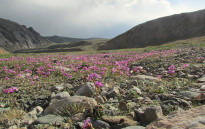 जगातील 'तिसरा डोळा' येथे सहकार्याने संधी, लेक इसिक कुल
जगातील 'तिसरा डोळा' येथे सहकार्याने संधी, लेक इसिक कुल कंबोडिया मध्ये animistic इको-टुरिझम सह निसर्ग व संस्कृती जतन.
कंबोडिया मध्ये animistic इको-टुरिझम सह निसर्ग व संस्कृती जतन.

